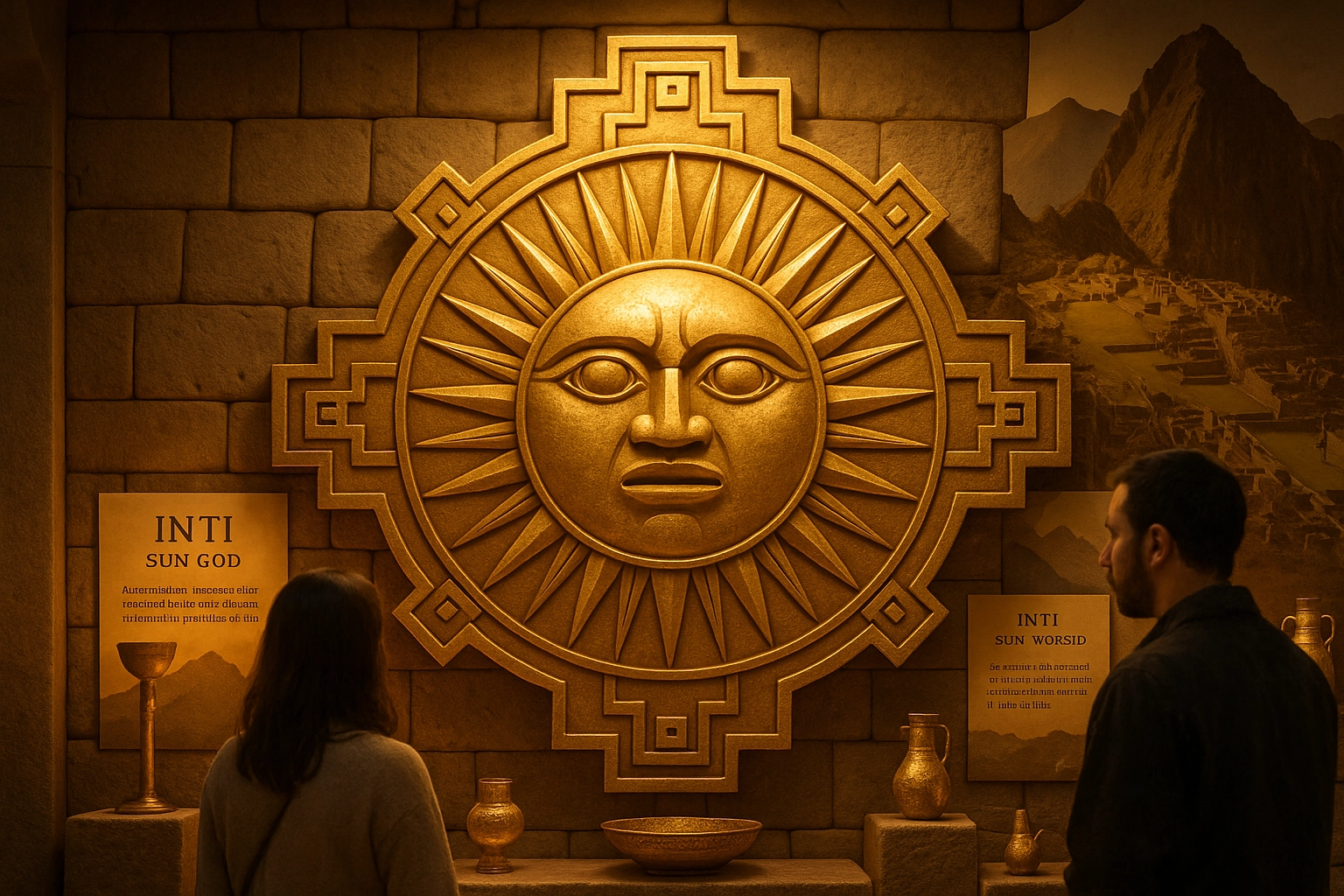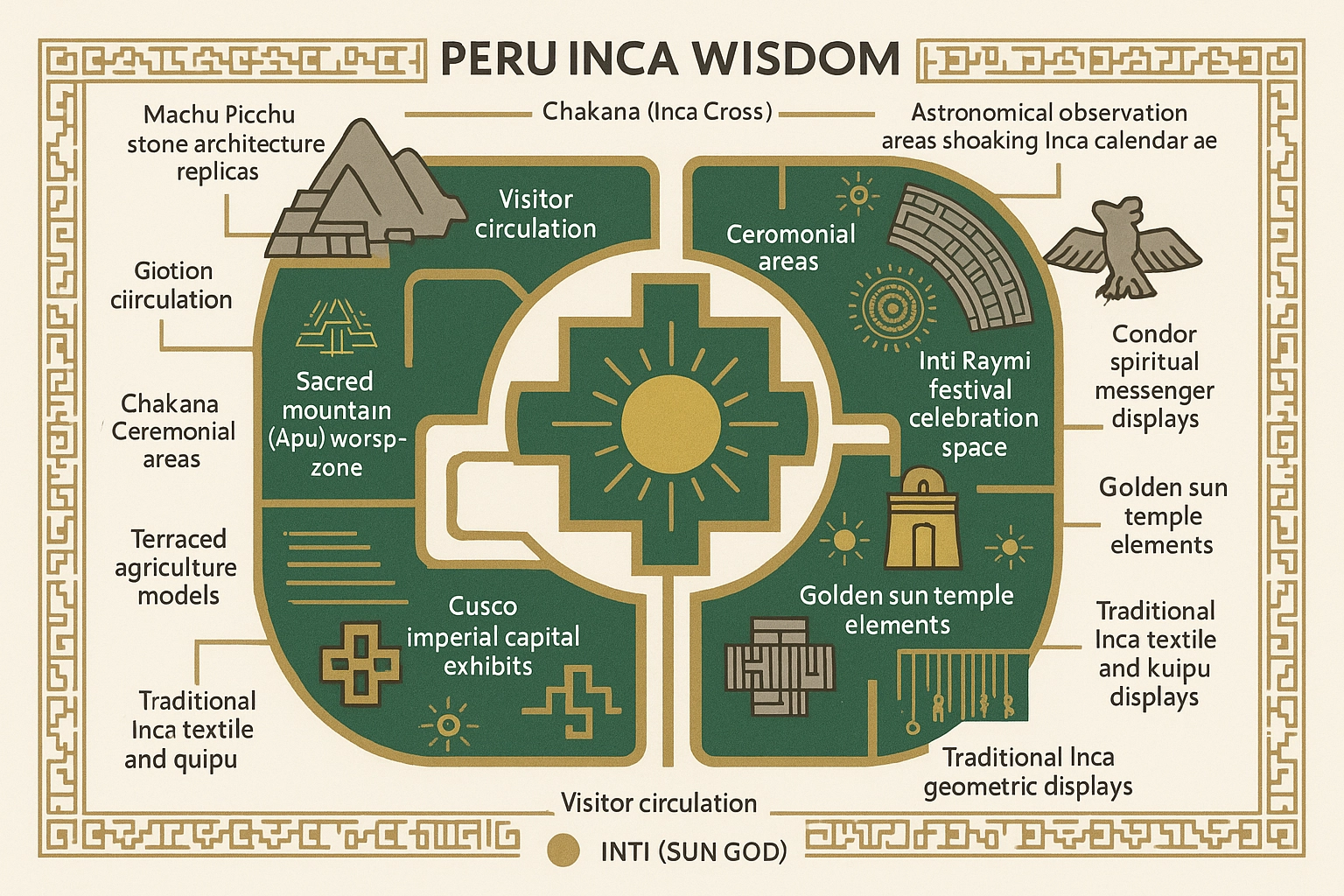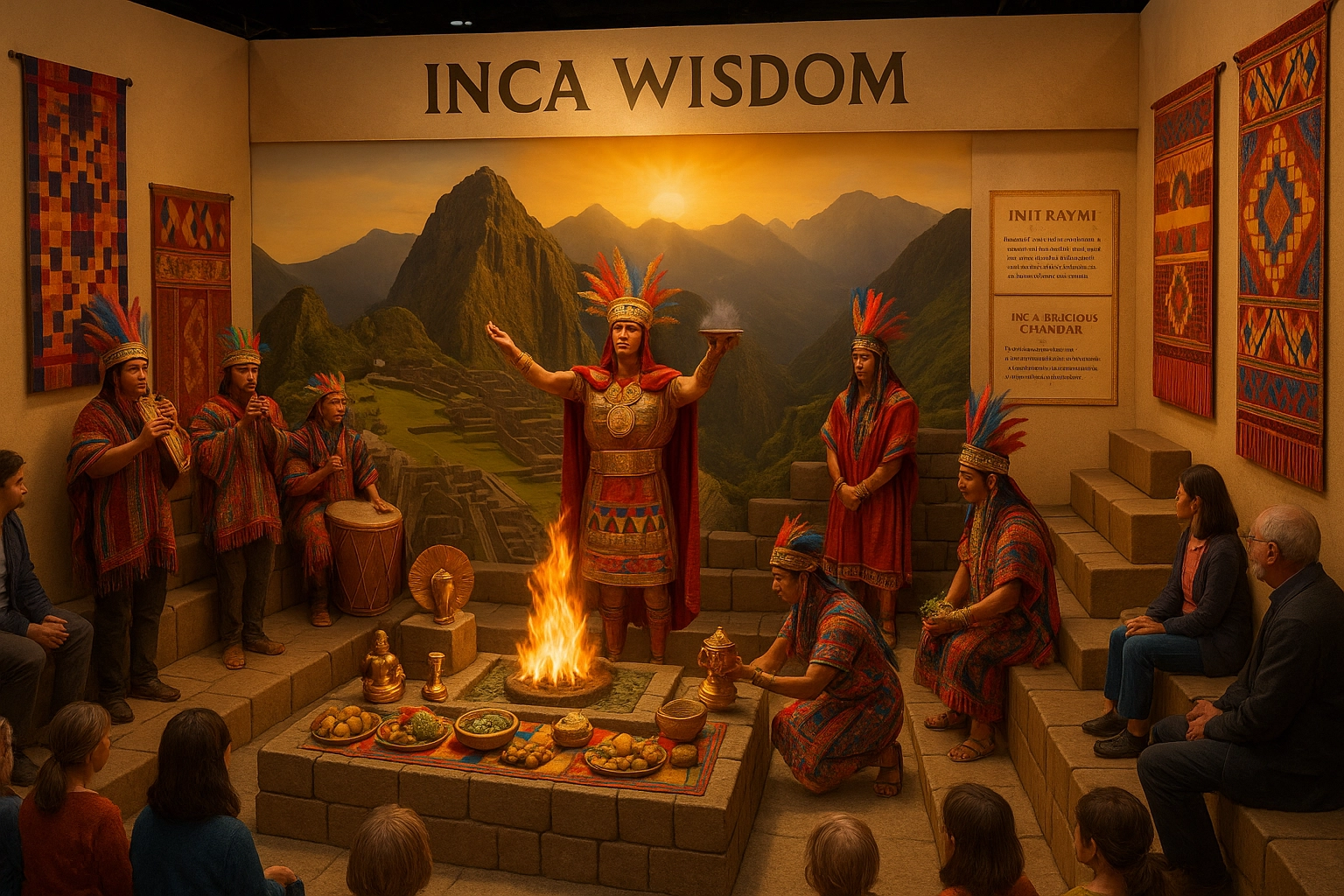Inca Wisdom - Peru Exhibition
Discover the profound wisdom and magnificent heritage of the Inca civilization through our immersive exhibition experience
Exhibition Layout & Experience

Exhibition Floor Plan
Interactive layout featuring terraced gardens, ceremonial spaces, and astronomical displays

Main Exhibition Hall
Featuring sacred ceremonial circle, traditional seating, and informational displays about Inca heritage

Sacred Chakana Display
Traditional stone circle representing the Inca Cross and the three worlds of existence
Historical Origins
The Inca Empire (Tawantinsuyu), centered in the Andes of modern-day Peru, arose in the early 13th century and became the largest empire in pre-Columbian America. Its legendary founder, Manco Cápac, is said to have been sent by the Sun God Inti.
Emergence & Development
The Inca civilization developed highly advanced systems of engineering, agriculture (terraces, irrigation), and astronomy. Cuzco served as the imperial capital, and Machu Picchu remains a masterpiece of sacred architecture and cosmic alignment.
Key Figures & Leaders
Manco Cápac
Legendary first Sapa Inca (emperor) and son of the Sun God Inti.
Pachacuti (r. 1438–1471)
Empire's greatest builder; transformed Cuzco, expanded territory, built Machu Picchu.
Atahualpa
Last reigning emperor, executed by the Spanish in 1533.
Core Concepts & Beliefs
Inti (Sun God)
Supreme deity and source of life; the Sapa Inca was Inti's "son on Earth."
Pachamama
Mother Earth, divine mother honored through rituals and offerings.
Apus
Sacred Mountains, living spirits of the Andes, worshiped with gifts.
Chakana
Inca Cross symbolizing the three worlds and cosmic balance.
Fundamental Principles
Ayni
Principle of sacred reciprocity between people, community, and nature.
Sumak Kawsay
Living in harmony with nature, community, and spirit ("Good Living").
Mit'a
Communal labor tax; everyone contributed to public works and infrastructure.
Ecological Stewardship
Terraced agriculture, crop diversity, and sustainable resource use.
Sacred Symbols
Golden Sun Disk
Embodiment of Inti, centerpiece in temples and ceremonies.
Chakana (Inca Cross)
Stepped cross representing the interconnectedness of the worlds.
Condor, Puma, Serpent
Sacred animals symbolizing sky, earth, and underworld.
Major Rituals & Ceremonies
Inti Raymi
Festival of the Sun - annual winter solstice celebration honoring Inti.
Capacocha
Pilgrimages and ceremonial sacrifices at high mountain shrines.
Offerings to Pachamama
Daily rituals before meals, farming, and journeys to honor Mother Earth.
Sacred Pilgrimages
Journeys to sacred mountains (Apus) and springs for spiritual connection.
Global Influence & Cultural Impact
Global Influence
The Inca's legacy lives on in sustainable agricultural techniques and their holistic view of nature and society. Inca concepts of reciprocity, community, and respect for the earth are increasingly studied as models for sustainability.
Cultural Impact
Architectural marvels like Machu Picchu, astronomical achievements, and artistic traditions in textile weaving, ceramics, and metalwork continue to inspire and amaze the world.
Geographical Spread
The empire extended from modern southern Colombia through Ecuador, Peru, Bolivia, northwest Argentina, and northern Chile. Sacred sites and pilgrimage routes remain spiritual centers throughout the Andes.
Important Spiritual Books & Texts
Oral Tradition
Myths, songs, and ritual knowledge preserved in Quechua oral literature
Comentarios Reales de los Incas
by Garcilaso de la Vega (17th century)
Felipe Guaman Poma de Ayala
Spanish chroniclers' accounts and writings
Associated Sacred Places & Structures
Machu Picchu
Sacred citadel and royal estate, masterpiece of Inca architecture.
Qorikancha
Temple of the Sun, main temple in Cuzco.
Sacred Valley
Terraces, towns, and pilgrimage routes in the Andes.
Lake Titicaca
Mythical birthplace of Manco Cápac and Mama Ocllo.
Memorable Inca Teaching
"The land does not belong to us. We belong to the land. In serving Pachamama, we find our place in the world."— Quechua Proverb (Inca Teaching)